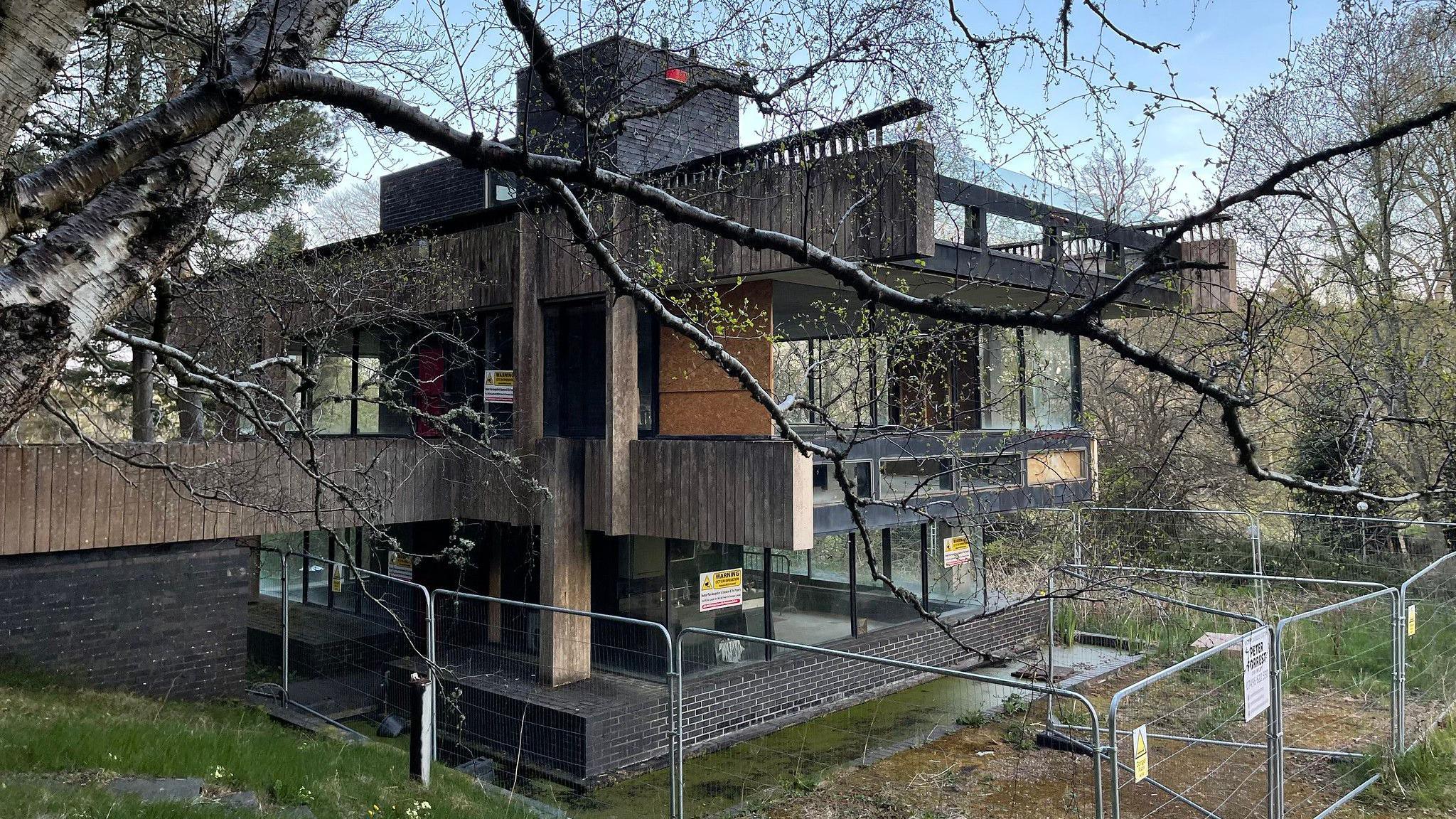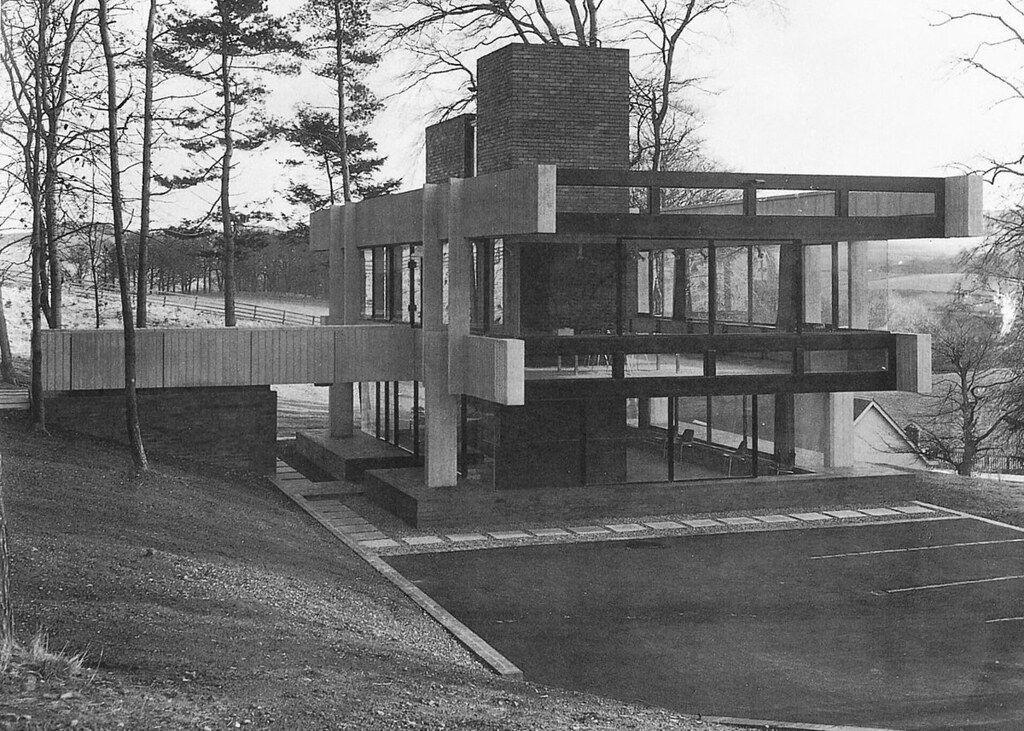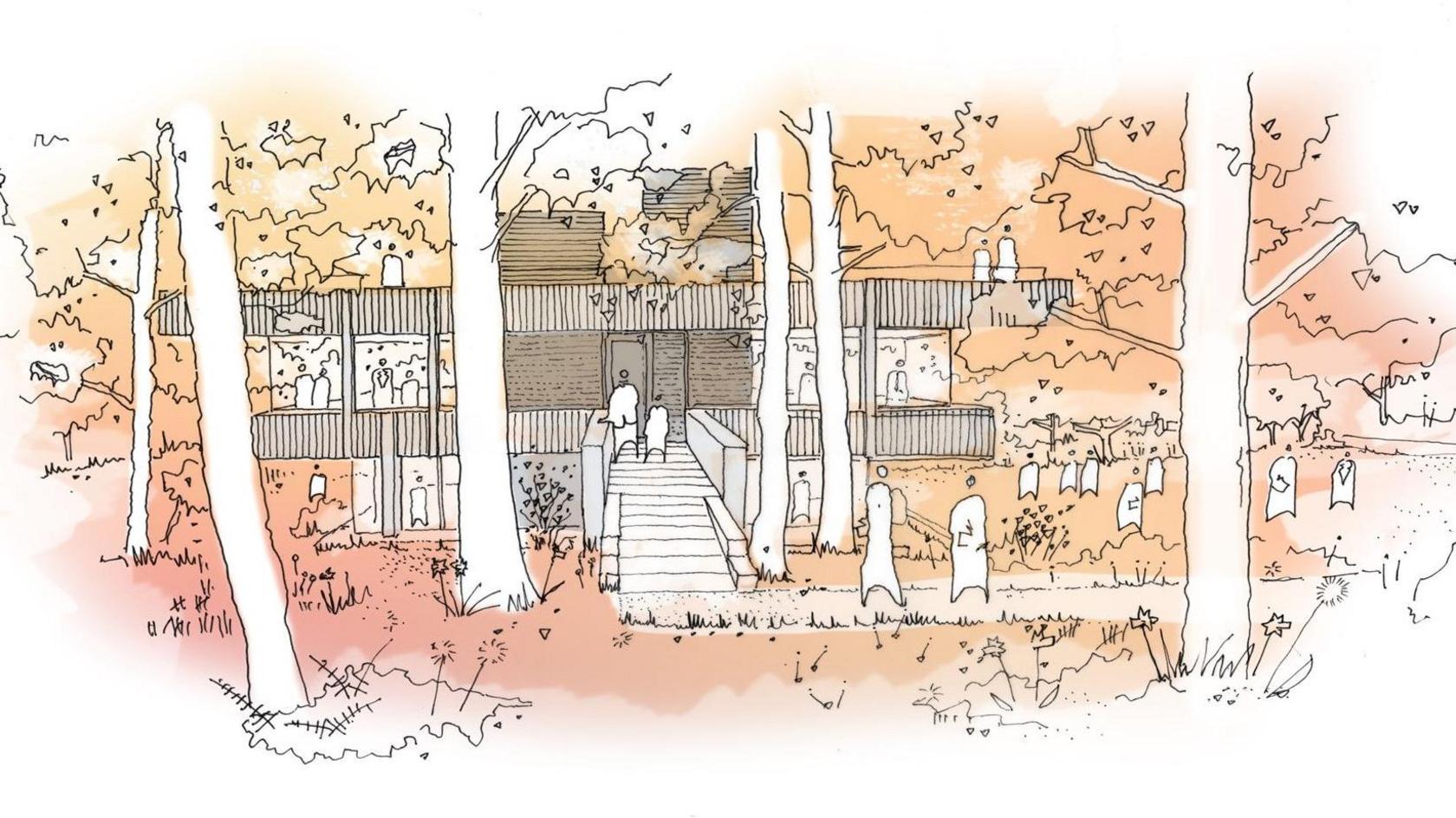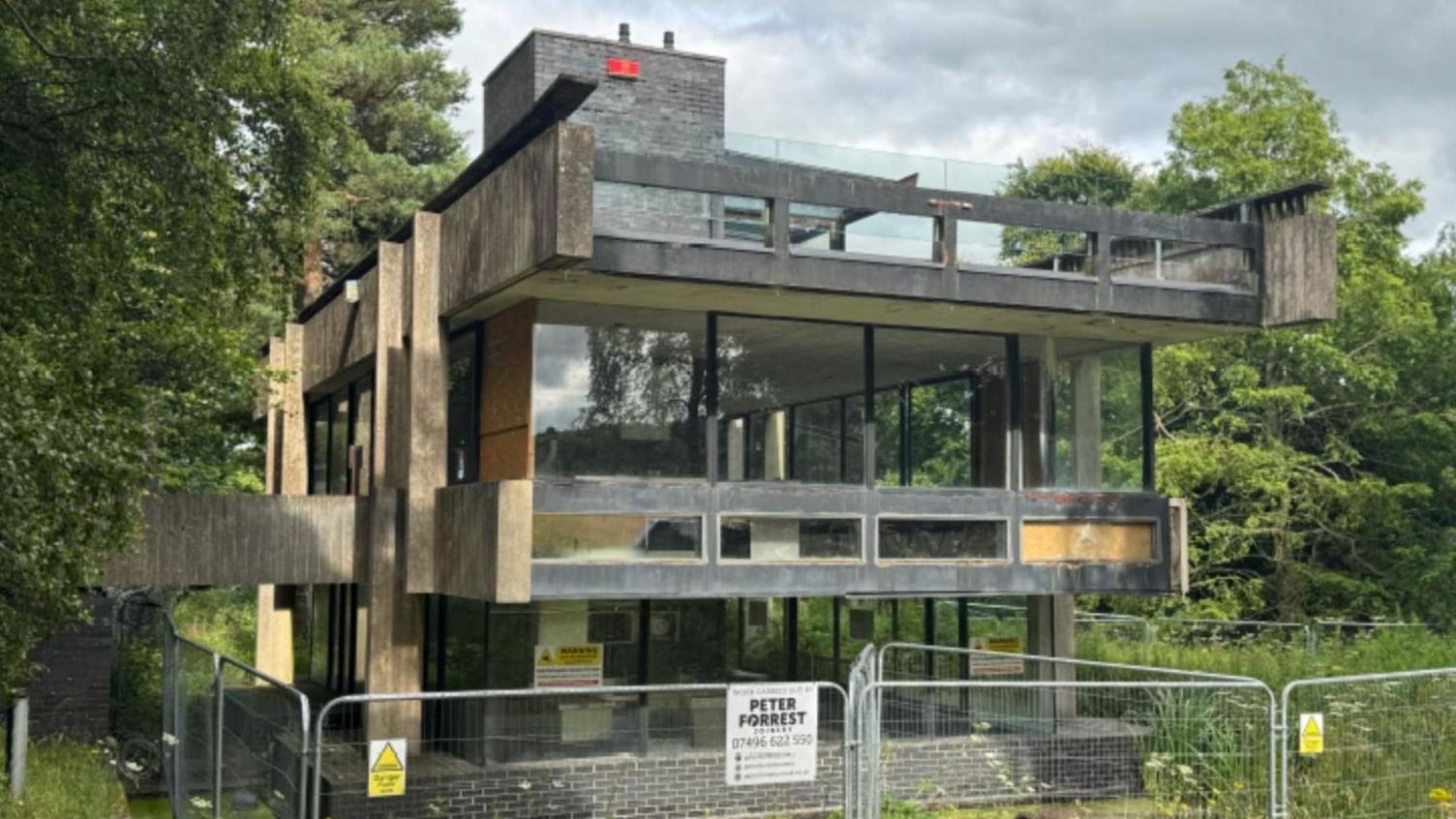Coalition formed to save A-listed brutalist studio

The coalition hopes to bring the building back into public use
- Published
A coalition has been formed in a bid to save the dilapidated studio of renowned textile designer Bernat Klein.
The studio, which sits close to the A707 near Selkirk in the Borders, was built for him in 1972 and is to go on sale with a guide price of £18,000.
The two‑storey concrete and brick structure was designed by Peter Womersley, who is considered to be one of the greatest brutalist architects to have worked in Scotland.
Leading Scottish heritage and design organisations have now joined forces in a bid to restore the building and bring it into public use.

The studio was built in 1972
The property, which was granted a category A listing in 2002, has been in a state of decline for more than two decades.
It is being auctioned by Savills, which describes it as in need of modernisation, with further potential "subject to requisite consents".
Klein, who died in 2014, collaborated with major European fashion houses such as Dior to design some of the most beautiful textiles of the 20th Century.
His studio was built as a workspace for design, weaving and exhibiting samples.
It lies adjacent to his home, High Sunderland, built by Womersley in 1958 and also a listed building.

Klein collaborated with major European fashion houses
The Bernat Klein Foundation (BKF), the National Trust for Scotland (NTS) and Scottish Historic Buildings Trust (SHBT) have launched a coalition bid to save the property from ruin.
With support from the National Lottery Heritage Fund they hope to "create a new venue to inspire creative arts in the Scottish Borders".
It has been estimated the full cost of restoration undertaken by specialists could exceed £3m.
However, the group's first priority is to "secure ownership of the property and prevent further deterioration".

It has been estimated it could cost more than £3m to restore the property
If their bid is successful, they hope the building could provide a permanent base for the BKF and its exhibitions, workshops and talks.
Prof Alison Harley, BKF chair of trustees, said: "We all want the building to be sensitively conserved and restored to be part of Scotland's creative and cultural heritage for future generations."
NTS chief executive Philip Long said the property was an "outstanding example in Scotland of 20th Century design heritage" which "must be protected for future generations".
Dr Samuel Gallacher, SHBT director, admitted that attempting to buy at auction was a "real unknown".
He said any donations and support were important to make sure they had the "best possible chance" of purchasing the building.
Related topics
- Published18 July
